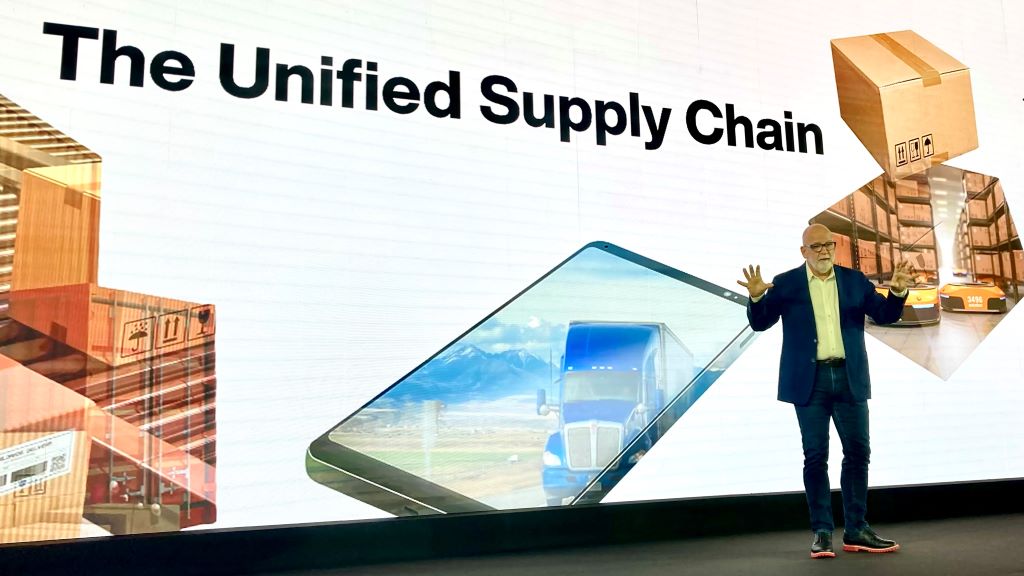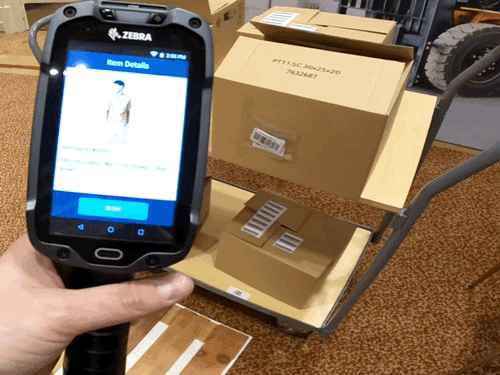Five ways to improve supply chain performance

|
Getting your Trinity Audio player ready...
|
Sampling some of the latest virtual reality devices, you can picture enterprises and clients making greater use of the metaverse to connect. But in-person events remain the gold standard when it comes to discussing big industry topics, such as how to improve supply chain performance.
Manhattan Associates – a provider of supply chain solutions – understands this. The global firm has a tradition of holding annual, in-person conferences, which gather software and hardware developers, as well as cloud specialists, together with customers to push products to the next level.
Dubbed Exchange, the firm’s European show – which has been held previously in Germany and Spain – took place this year in Cannes, France. And with 370 attendees representing 93 companies – including exhibitors, keynote speakers, and breakout session presenters – meeting at the Hôtel Martinez venue, there’s no shortage of ideas to explore.
So let’s jump straight into our first selection of event highlights – based on the main stage program and conversations with attendees – which caught the eye of TechHQ.
Here are five ways to improve supply chain performance:
1- Eliminate bridges and experience flow
In the opening keynote, Eddie Capel – President and CEO of Manhattan Associates – drew an analogy between successful organizations and athletes in a state of flow. He describes the state of mind, where people find themselves fully immersed in an activity, as the sweet spot between too easy and too hard.

Opening the event: Eddie Capel sets the scene for improving supply chain performance. Photo: JT.
By some estimates, spending 15% more time in engaging tasks can add up to 200% more performance. Practically, enterprises can up their flow by adding experience and other positive qualities to their organization. And that know-how can be shared, bringing the discussion back to why getting stakeholders together to improve supply chain performance delivers results.
Capel drew attention to the pinch point that occurs when there’s no real-time interaction between warehouse management systems (WMS) and transport management systems (TMS). “Bridges are the biggest problem with this architecture,” he told keynote attendees.
Having to send information back and forth between separate WMS and TMS elements not only takes time, but the approach runs into problems when things change out of sequence. To unify supply chain management, Capel recommends using a cloud-native platform and feeding information into a single source of truth using composable microservice APIs.
2 – Get expert advice on avoiding low branches
Picking up on the theme of APIs, David Quin – Location Technology Executive at Trimble Maps, highlighted the importance of gathering information from systems with the right level detail. Speaking with TechHQ in the Experience area, where attendees had the chance to speak with developers and watch demonstrations of how supply chain performance can be improved, Quin shared the example of vehicle transporters.
“The trucks need to avoid low branches,” he said, pointing out how the precious cargo is exposed on the top deck. Vehicle transporters can carry as many as 12 cars at a time. However, regular route mapping services don’t have sufficient detail when it comes to features such as tree cover.
Trimble’s live data services not only help operators avoid low branches, they can recommend routes to maximize fuel efficiency and minimize emissions, as well as answer other logistics questions. And, they are just an API call away, if you’re using a supply chain management platform based on composable microservices.
3 – Pay attention to the floor and canteen
Just like a tiny stone can send a skateboarder flying, warehouse floors need to be smooth and level to provide an accurate platform for automation – and these details need to be flagged so that construction crews are aware.
It’s just one of many insights that Justin Cox – Group Supply Director of JD Sports – shared with the audience in one of the customer sessions. Within days of joining the firm, Cox was making calls on what needed to be done to ensure that a warehouse – which was a spec build, rather than having been purposed designed – was fit for the job.

Demo time at Exchange 2023: David Siberry, Senior Solutions Consultant at Manhattan Associates, shows how modern apps and touch screen devices combine to speed up warehouse tasks. GIF: JT.
His decisions included requesting that the floor be ground as he knew that the AutoStore system, which would be central to the distribution center’s operations, needed a flat floor.
Besides the 300,000 bin AutoStore, the facility also features a beautiful canteen – to boost the appeal of the workplace for employees. “It’s one thing picking great automation systems, but without great people it’s impossible,” he said.
4 – Stay abreast of the latest software features
With updates coming thick and fast, supply chain software can help firms in ways that users may not have noticed. For example, Brian Kinsella – SVP of Product Management at Manhattan Associates – presented the firm’s dynamic load-building tool, which is coming soon to the platform.
The software gives users a visual representation of axle balancing and optimal front and back loading, which can enable higher trailer utilization and benefit vehicle handling. There are other tools on the horizon too.
TechHQ's @JT_bluebird1 is in Cannes 🇫🇷 to hear the latest #supplychain success stories at @ManhAssocNews Exchange 2023. For a recap on all things supplychain #tech 👉https://t.co/Z2WnwbCKh1 pic.twitter.com/YmCFVW5gbc
— TechHQ (@techhq) October 10, 2023
One idea being explored with select customers is so-called active yard management. In development, the system allocates yard slots based on putaway locations – matching the incoming load to its final destination to optimize warehouse operations.
It’s one of a number of examples of how unified supply chain management will continue to unlock gains for operators.
5 – Get shoppers more involved
Understanding customer behavior has always been important, and today that includes the ‘blue dot’ effect – an observation made by Ken Hughes, a leading advisor on retail trends to some of the world’s biggest brands, who spoke at Exchange 2023 – where everything comes to the customer.
Shoppers are central rather than being at the end of the chain. And as supply chain management systems become more capable, it’s clear that customers can become more involved, which is helping firms on multiple fronts.
In a breakout session, Amy Tennent, Senior Director of Product Management at Manhattan Associates, described some of the benefits that clients were seeing. “New implementations are showing product delivery promises earlier in the customer journey,” she pointed out.
Having that knowledge improves the customer experience and increases sales conversion. Her team is working with Google to make more accurate delivery estimates – validated using machine learning tools, for example – available in search engine results.
Another performance boost comes from giving customers the ability to manage their orders right up until dispatch. The feature improves supply chain performance as it means fewer returns. Self-service options also help contact center teams as they reduce the number of customer order queries that have to be handled via voice or text channels.
Network effect
Sharing supply chain success stories is an effective way of making the transport of goods more efficient, as everyone benefits. And we’ve just scratched the surface, as there a many more topics to explore on this theme.
Disclosure: the invitation to attend Exchange 2023 included travel (Economy) and overnight accommodation.










